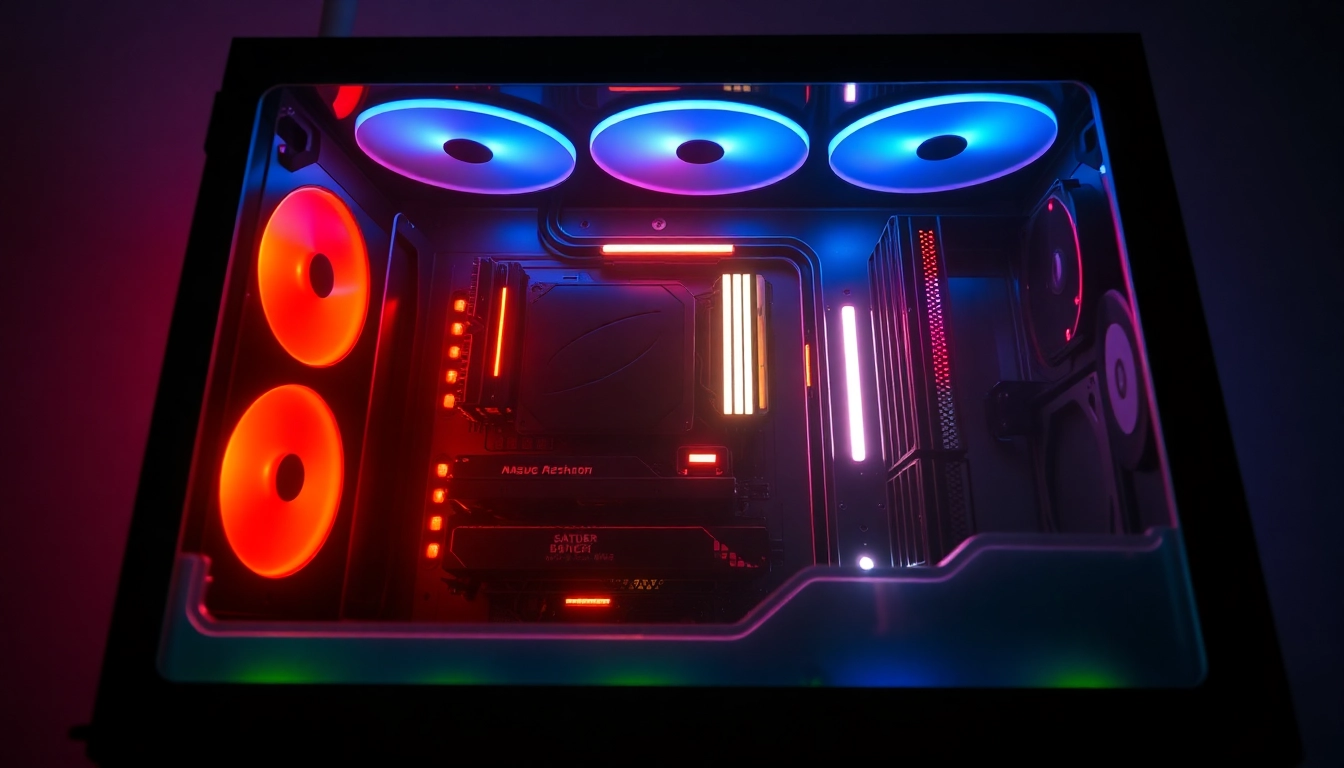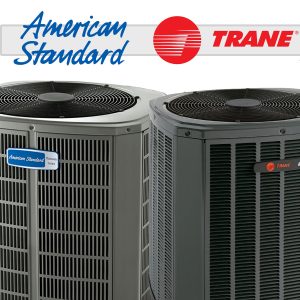Top Quality PC CASE Supplier for Building Your Perfect Gaming Setup
Understanding PC Cases: Types and Features
Different Types of PC Cases: A Comprehensive Guide
When embarking on a custom PC build, one of the foundational decisions you must make is choosing the right PC CASE Supplier and the type of case that suits your needs. PC cases come in various forms and functionalities, each catering to different design preferences, technical requirements, and performance expectations. Here’s a breakdown of the primary types of PC cases:
1. Full Tower Cases
Full tower cases are designed to accommodate advanced configurations and extensive hardware setups. They typically offer excellent airflow, multiple expansion slots, and support for numerous drives. If you plan on installing water cooling systems or high-performance components, this type of case is often the most suitable choice.
2. Mid Tower Cases
Mid tower cases strike a balance between size and functionality. These cases can usually fit standard motherboard sizes (like ATX and Micro-ATX) and provide sufficient room for mid-range hardware. They’re popular among gamers and professionals alike, offering ample space for cooling solutions without being excessively large.
3. Mini Tower Cases
Mini tower cases are compact and cater to users looking for smaller builds, typically supporting Micro-ATX and mini-ITX motherboards. While they provide limited space for additional components, they can still function well for budget-focused or space-saving configurations.
4. Compact Cases
These cases, including SFF (Small Form Factor) and other ultra-compact models, are built for constrained environments. They often require specialized components that fit smaller dimensions and usually have limited upgrade options. However, they are ideal for users who prioritize portability or have minimal space.
5. Specialized Cases
Some cases are designed for specific purposes or aesthetics, such as gaming or office use. Examples include cases with unique cooling features, sound-dampening materials, or custom designs that enhance visual appeal. These cases can often be tailored to individual needs, allowing for personal expression.
Essential Features to Look For in a PC CASE Supplier
Not all PC cases are created equal, and thus, selecting the right supplier is crucial. Here are some essential features to consider when evaluating a PC CASE Supplier:
1. Quality of Materials
The durability and quality of materials used in the PC case should be a priority. Look for suppliers that provide cases made from high-quality steel, aluminum, or tempered glass that enhance both aesthetics and longevity.
2. Cooling Options
A good PC case should offer varied cooling options such as support for multiple fans, radiator placements, and airflow designs that help to effectively dissipate heat from components. Efficient cooling is critical for maintaining performance and prolonging the life of your hardware.
3. Expandability and Compatibility
The case should be compatible with the components you plan to use, allowing for the installation of future upgrades. Key factors include space for additional drives, GPU length, and enough slots for potential expansions.
4. Ease of Assembly
A well-designed case should make the assembly process user-friendly. Look for features like removable dust filters, tool-less drive bays, and cable management options that streamline the building experience.
5. Aesthetic Design
While functionality is critical, the aesthetic appeal of a PC case can significantly enhance your setup. Consider factors such as color scheme, LED lighting options, and whether the case incorporates glass panels for showcasing your hardware.
How PC Case Design Influences Cooling and Performance
The design of a PC case plays a substantial role in the overall cooling efficiency and performance of a system. Here are several ways in which case design impacts these crucial aspects:
1. Airflow Pathways
Proper airflow is vital for keeping components cool. Cases with strategic fan placements and airflow designs promote the efficient movement of air, helping to prevent overheating.
2. Cooling Support
Many modern PC cases accommodate various cooling solutions, including air coolers and liquid cooling systems. The ability to fit multiple radiators or fans directly influences how effectively a case can handle heat dissipation.
3. Layout Design
The internal layout of a PC case determines how well components can breathe. Some designs may have better spacing that allows for better heat distribution and fewer hot spots.
4. Cable Management
Good cable management ensures that cables don’t obstruct airflow, thus enhancing cooling efficiency. Cases that provide designated pathways for cables help create a neater, more efficient build.
5. Component Positioning
The positioning of components, such as the PSU at the bottom or a vertical GPU mount, affects airflow direction and temperatures. Innovative designs make the best use of space while optimizing thermal dynamics.
Finding the Right PC CASE Supplier for Your Needs
Top PC CASE Suppliers: An Overview of the Market
With a burgeoning market for PC cases, choosing a reliable supplier becomes crucial. Here is a brief overview of well-known suppliers that have made a name for themselves within the industry:
1. Micro Center
Offering a wide range of computer cases from revered brands like Corsair and Lian Li, Micro Center is a go-to destination for many builders. They provide options for various needs, whether for high-performance gaming, workstation, or budget builds.
2. Thermaltake
Thermaltake is recognized for its diverse lineup of cases designed for gamers. Their offerings often include unique aesthetics along with functional features targeted at cooling performance and custom modding.
3. Lian Li
Specializing in aluminum cases, Lian Li’s products are prized for their quality and durability. They offer elegant designs that appeal to users looking for both aesthetics and performance.
4. Newegg
Newegg is a prominent online retailer that provides a vast marketplace of PC cases from numerous suppliers, ensuring that users can find exactly what they need, whether for new builds or upgrades.
5. Corsair
Corsair is a household name in the gaming community, known for their high-quality components and cases. They champion innovation through features such as customizable RGB lighting and excellent thermal performance.
Evaluating Quality: What Makes a Great PC CASE Supplier?
When selecting a PC case supplier, evaluating their quality is essential. Factors to consider include:
1. Warranty and Support
A great supplier often stands behind their product with a robust warranty and customer support. This assurance can provide confidence in the quality and longevity of your investment.
2. Customer Reviews
Examining customer feedback, both positive and negative, can provide valuable insights into the experiences of other users. Look for patterns in reviews to identify potential issues.
3. Reputation in the Community
Well-regarded PC case suppliers often have dedicated communities or forums where users share their experiences, challenges, and solutions associated with specific cases.
4. Product Range
A diverse product range can indicate a supplier’s commitment to catering to various market segments and building needs. It’s advantageous to select a supplier that offers cases suitable for different configurations.
Customer Reviews: Learning from Experience
To gain perspective on different suppliers and their offerings, customer reviews are invaluable. Here are some ways reviews can inform your decision:
1. Identifying Strengths and Weaknesses
Reviews can highlight what users love about specific cases, as well as the issues they’ve encountered. This information helps anticipate potential problems and advantages upfront.
2. Performance Insights
Look for information regarding the thermals, noise levels, and build quality shared by users who have built their systems in particular cases.
3. Real-World Examples
User-generated content, such as build logs or gallery submissions, provides real-world examples of how different cases perform under different setups.
4. Help with Compatibility
Some reviews go in-depth about compatibility with various components, ensuring you don’t have issues with size or fit when you start your build.
Building Your PC: Selecting Your Components
Compatibility Considerations: Choosing the Right Case for Your Build
One of the most pivotal aspects of your custom PC build lies in ensuring compatibility among your components and the case you select. Here are some do’s and don’ts to keep in mind:
1. Motherboard Size Compatibility
Make sure to choose a case that can accommodate your motherboard size, whether it’s ATX, Micro-ATX, or mini-ITX. Check the specifications of the case to confirm it supports your motherboard’s form factor.
2. GPU Clearance
One of the most common issues builders encounter lies within graphic card dimensions. Ensure that the case has enough height clearance for the GPU you plan to use. Manufacturers often list maximum GPU lengths in their specifications.
3. Cooling Solution Support
Verify that your chosen cooling solution can fit within your case. This includes air coolers, liquid coolers, or fans, each requiring different amounts of space. Knowing maximum fan height or radiator length is essential.
4. Drive Bays Configuration
Your case should have sufficient space for all storage drives you intend to use. This includes SSDs and HDDs, so evaluate how many drive bays and what layouts the case can provide.
5. PSU Compatibility
Power supply units vary in size and form, and it’s important to ensure that the case can fit the PSU without issues. Some cases have special compartments for PSU placement, so take note of those features.
How to Organize Your Build: Tips from PC CASE Suppliers
Once your components are selected, the next step is building and organizing your setup. Proper organization can have a significant impact on airflow and ease of access for future upgrades. Here are expert tips:
1. Plan Your Layout
Before installing components, plan how they will be laid out within the case. Consider airflow paths, cable routes, and access points for maintenance.
2. Cable Management
Utilize cable management features in your case to keep cables organized and out of airflow pathways. This not only improves aesthetics but also contributes to better cooling.
3. Installing Components
Start with the components that take the most room, such as the PSU and motherboard. Then, add drives and GPUs. Remember to secure screws properly and make all connections secure.
4. Testing Before Closing
After assembly, but before closing the case, test your system to ensure everything works as expected. This helps prevent any last-minute troubleshooting.
5. Regular Maintenance
Once your PC is functional, make a habit of regular dusting and checking cable connections. Keeping your system clean enhances cooling efficiency and prolongs its lifespan.
Recommended Accessories for Enhancing Your PC Case
To enhance your PC case and overall build experience, consider investing in the following accessories:
1. Additional Cooling Fans
Installing additional cooling fans can improve airflow and overall temperature management. Consider fans that suit your aesthetic preferences and performance needs.
2. RGB Lighting Kits
Add RGB lighting to your setup for both aesthetic flair and practical visibility in dark conditions. This is available in strips, fans, or integrated into components.
3. Dust Filters
Installing dust filters ensures that the internal components of your PC case remain free from contaminants that can hinder performance over time.
4. Cable Extensions
Cable extensions not only improve aesthetic quality but also help with cable management. They come in various colors and can complement your build’s color scheme.
5. Custom Side Panels
Consider custom side panels to showcase your hardware. Options include acrylic or tempered glass panels that display your internals while allowing for cooling performance.
DIY PC Case Modding: Customize Your Setup
Popular Modding Techniques to Personalize Your PC CASE
Modding your PC case is a thrilling way to express your personality and customize your setup. Here are some popular modding techniques:
1. Painting the Case
Custom paint jobs can transform a standard case into a one-of-a-kind centerpiece. Use high-quality paint suitable for metals or plastics, and always ensure proper ventilation during the process.
2. Adding Custom Lighting
Use LED or RGB strips to illuminate your build. Placing these strategically can awaken your setup, allowing for vibrant transitions and color schemes.
3. Unique Front Panels
Modding the front panel can drastically alter the case’s look. Consider using mesh or acrylic materials to create a unique appearance while maintaining airflow.
4. Custom Fans and Coolers
Swap out standard fans for unique designs that match your chosen theme, or even consider liquid cooling systems that have visible elements.
5. Window Cutouts
Cutting window panels into the case allows for visibility of key components. Use templates and precise tools to ensure clean cuts without damaging the case.
Tools and Supplies for Starting Your Modding Journey
To embark on modding your PC case, here is a list of essential tools and supplies:
1. Screwdrivers
A set of various-sized screwdrivers is essential for assembly and modifications.
2. Dremel Tool
A Dremel tool is perfect for cutting materials or engraving designs into the case.
3. Paint Supplies
Invest in spray paint, brushes, and painter’s tape to create stunning finishes or custom designs.
4. Adhesives
Super glue or epoxy can help attach components or secure decorative elements to your case.
5. Cable Management Clips
These clips help keep cables organized and prevent tangling inside the case for a cleaner build.
Best Practices for Safe Modding of Your PC Case
To ensure a safe modding experience, keep these best practices in mind:
1. Work in a Well-Ventilated Area
Many modding materials can create fumes, so it’s crucial to work in an area with adequate airflow.
2. Use Protective Gear
Safety goggles and gloves can protect your eyes and skin from dust and hazardous materials during the modding process.
3. Take Your Time
Rushing through mods can lead to mistakes; take your time to achieve the best results.
4. Plan Before Acting
Outline your design and modifications before you start cutting, painting, or rearranging elements to ensure a cohesive look.
5. Test Changes Before Closing Up
Always check new installations or modifications before reassembling the case to confirm everything is operating correctly.
Future Trends in PC Cases: What’s Ahead?
Innovations in Design: What to Expect from PC CASE Suppliers
As technology evolves, so do PC cases. Here are some future trends and innovations to anticipate from PC CASE Suppliers:
1. Modular Designs
Expect to see more modular cases that allow users to customize their layouts and cooling options according to their specific needs.
2. Smart Cases
With the rise of IoT, smarter PC cases equipped with temperature sensors and monitoring apps are on the horizon, enhancing performance monitoring.
3. Enhanced Cooling Solutions
Innovations in airflow and cooling components will likely lead to advancements in heat dissipation technologies that provide users with quieter and cooler systems.
4. Eco-friendly Materials
An increasing trend towards sustainability might see suppliers experimenting with recycled or eco-friendly materials while maintaining durability.
Eco-Friendly Cases: The Shift Towards Sustainable Materials
As environmental awareness grows, many manufacturers are seeking sustainable solutions, including:
1. Recyclable Components
Watch for cases designed with recyclable materials that minimize pollution and waste.
2. Biodegradable Options
Some suppliers may explore biodegradable materials for building cases that reduce their carbon footprint.
3. Life Cycle Assessments
Suppliers might conduct lifecycle analysis to improve the environmental impact of their products, ensuring responsible sourcing and disposal.
Custom Build Trends: User-Centric Designs
Current trends lean towards user-centric designs that cater to the unique preferences and layout ideas of the builder:
1. Personalization Features
Expect to see more cases that offer personalization options, from colors to designs that allow users to express individual styles.
2. User-Inspired Layouts
Feedback from users will increasingly influence case layouts that reflect modern component configurations and varying tech needs.
3. Enhanced User Integration
Integration with software-driven performance monitoring tools within the case structure will likely become standard, enabling seamless customization and analysis.
4. Emphasis on Build Quality
As buyers become more discerning, a focus on robust build quality will become paramount among PC case suppliers, ensuring longevity and reliability.














Post Comment